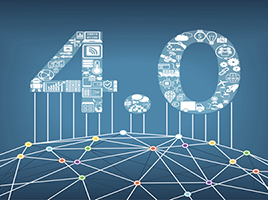[av_one_full first min_height=” vertical_alignment=” space=” custom_margin=” margin=’0px’ link=” linktarget=” link_hover=” padding=’0px’ border=” border_color=” radius=’0px’ background=’bg_color’ background_color=” background_gradient_color1=” background_gradient_color2=” background_gradient_direction=’vertical’ src=” background_position=’top left’ background_repeat=’no-repeat’ animation=” mobile_breaking=” mobile_display=” av_uid=’av-4al3xb’]
[av_video src=’https://www.youtube.com/watch?v=AWj5pZ9tTlI’ mobile_image=” attachment=” attachment_size=” format=’16-9′ width=’16’ height=’9′ conditional_play=” av_uid=’av-jp3xynkw’ custom_class=”]
[av_textblock size=” font_color=” color=” av-medium-font-size=” av-small-font-size=” av-mini-font-size=” av_uid=’av-2w9rlb’ custom_class=” admin_preview_bg=”]
Here is the Top 5 ERP News of the week, Dec 10th.
- How AI Will Reshape ERP in 2019
- Nine Benefits of Integrating Mobile Into Your CRM Software
- What Does the Future Look Like for ERP Systems?
- Ten Manufacturing Technology Predictions for 2019
- Rethinking CRM to Transform One-Time Buyers Into Lifelong Customers
How AI Will Reshape ERP in 2019
Since ERP systems are the glue that combines all departments within an organization, innovations that they introduce can have a huge influence on a company’s profitability. From AI bots that use natural language to interface with customers to manufacturing systems that customize on the fly and warehouse systems that can plan goods in close proximity based on predictions of future orders, there are key updates to ERP systems that can have a huge impact on a company’s success.
Nine Benefits of Integrating Mobile Into Your CRM Software
A mobile service is a software interface that integrates with a physical telephone device. Mobile and CRM are two technological tools that every company should adopt in order to thrive today. Large-scale organizations and multinational corporations use such tools. But startups and small- and medium-scale enterprises avoid using them because they are an investment that they don’t want to make.
What Does the Future Look Like for ERP Systems?
ERP systems, though not known by that description at the time, were first developed in the 1960s as a means of controlling inventory and other basic manufacturing processes. By the 1970s, these systems had evolved to become material requirement planning (MRP) systems for scheduling production processes. Fast-forward to the 1990s and Gartner became the first to call these, significantly more elaborate systems, ERPs (enterprise resource planning) systems. As a precursor to the modern ERP systems we know today, these systems had moved from controlling the shop-floor to managing back-office functions, including accounting and human resources.
Ten Manufacturing Technology Predictions for 2019
Running as lean and fast as they can to capitalize on every growth opportunity in 2018, manufacturers are taking bold steps to digitally transform operations in 2019. According to a recent survey of 151 North American manufacturing professionals conducted by Decision Analyst on behalf of IQMS, technologies that bring greater insights and mobility are at the top of the list for enabling their transformation. These include real-time monitoring, analytics, business intelligence (BI), mobile enterprise resource planning (ERP), and quality management applications. Notably, the manufacturers that already are orchestrating these technologies in response to long-standing challenges, are growing at least 10 percent faster than their peers.
Rethinking CRM to Transform One-Time Buyers Into Lifelong Customers
Brands are making a significant investment to find customers and move them through the sales cycle. Yet the end-goal of this long-winded engagement process is a transaction. Sherri Kolomayz, Senior Marketing Manager, Infor Global Solutions talks about how CRM can help turn this into an ongoing, personalized and two-way relationship.
[/av_textblock]
[/av_one_full]




